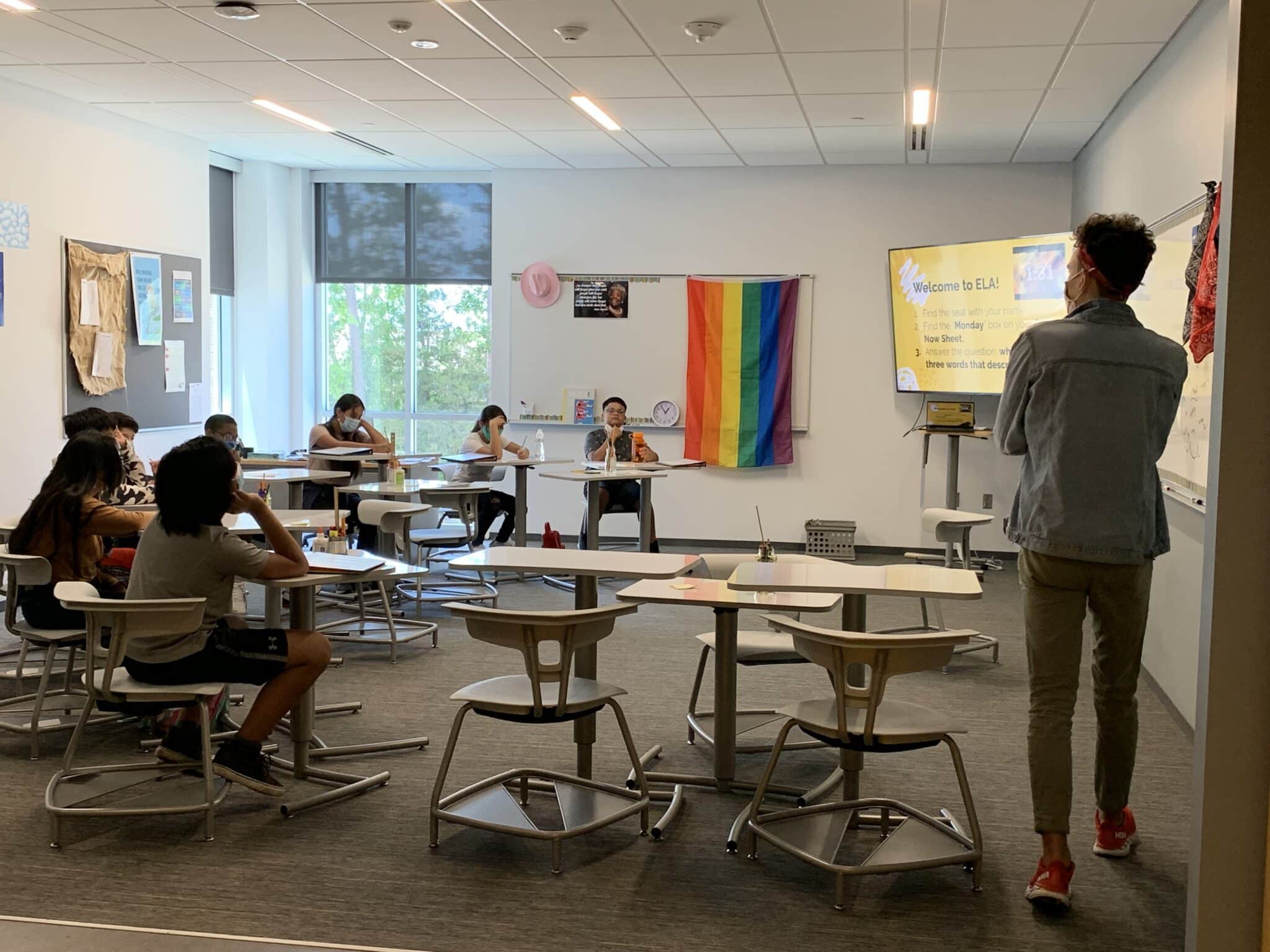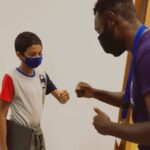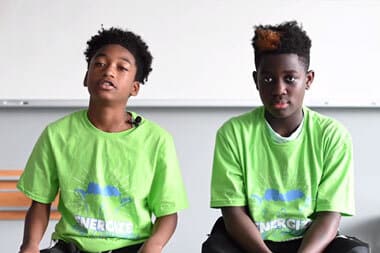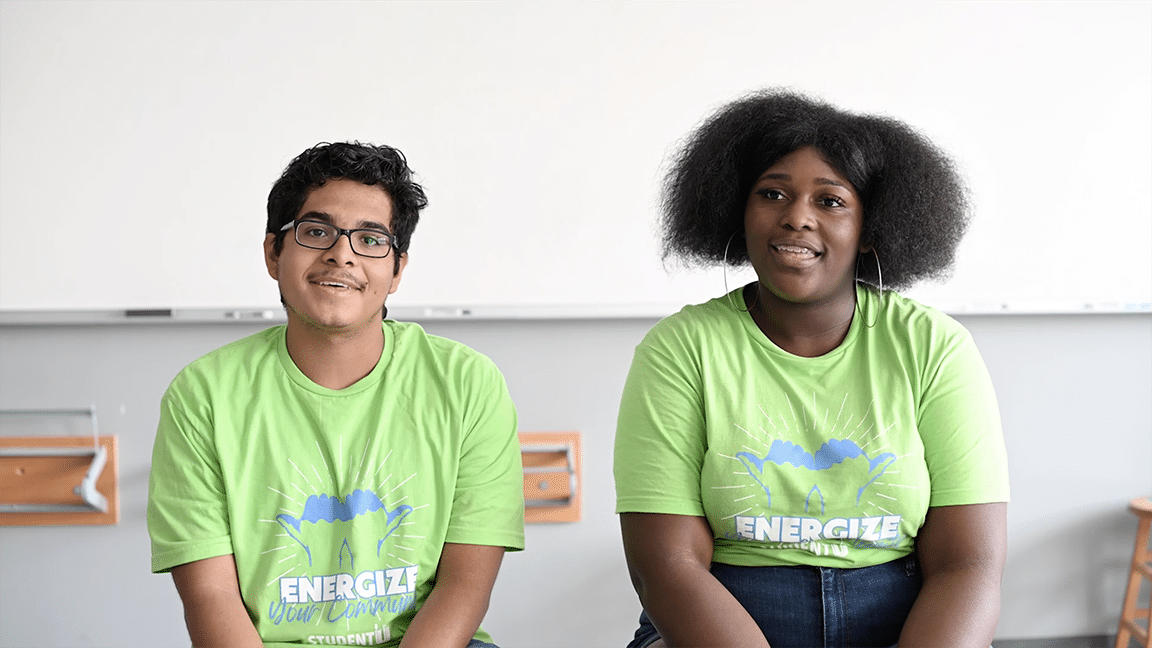 Youth Work 101: Supporting Queer And Gender Nonconforming Students In The Classroom
Youth Work 101: Supporting Queer And Gender Nonconforming Students In The ClassroomThis month’s blog on Supporting Queer and Gender Nonconforming Students is paraphrased from an interview with Lucy Bergwall, a current Middle School Math Teacher and Student U teacher alumnus, with writing by Dexter Phuong, a Student U Advancement Team Intern.
Welcome to the Youth Work 101 Series! Student U uses this blog series to support youth work practitioners, educators, advocates for young people, and after-school professionals in their work by sharing what has worked for us and by offering free resources each month on a best practice.
Hello and Happy Pride month!
My name is Dexter Phuong, and I am currently an intern working with the advancement team at Student U! I am a proud first-generation Asian American studying Communications and Marketing at Western Carolina University. June signifies the beginning of pride month and is a very special month to me as a fellow member of the LGBTQ+ community. Pride month is celebrated every year to honor the 1969 Stonewall Uprising in Manhattan which paved the way for the modern LGBTQ+ (lesbian, gay, bisexual, transgender, queer or questioning) rights movement. This month serves as a way to bring awareness to LGBTQ+ narratives, recognize the impact that LGBTQ+ individuals have had on equality and civil rights locally and nationally, and increase the understanding of and reduce violence towards LGBTQ+ people. Pride month is a celebratory time for many individuals around the world and includes pride parades/marches, concerts, workshops, rallies, community days, festivals, commemorations, dance parties, and more.
Today, LGBTQ+ (lesbian, gay, bisexual, transgender, and queer/questioning) students make up a larger majority of classrooms than they ever have before. In 2019, a survey by the CDC estimated that nearly 17% of students in the U.S. identify as lesbian, gay, bisexual, or questioning. Additionally, 1 in 6 young adults who are part of Gen Z identify as LGBTQ+. Being openly LGBTQ+ in school can be a very difficult thing for students especially due to the lack of resources they can go to. On top of that, LGBTQ+ students are nearly twice as likely to be called names, verbally harassed or physically assaulted at school compared to their non-LGBTQ+ peers. Oftentimes educators want to support their LGBTQ+ students, but don’t know where to start. With the increase of openly LGBTQ+ students, it is important that classrooms act as safe spaces for students to explore their identities and also where they can learn how to empathize with those who are different from them. An environment where students feel safe to be themselves without judgment is one that fosters learning, curiosity, and ultimately, growth.
Student U would like to celebrate pride month by offering seven ways educators can support their LGBTQ+ and gender non-conforming students. To get insights for this blog post, I interviewed Mx. Lucy Bergwall, a math teacher currently teaching at Brogden Middle School and a student U teacher alumnus! Mx. Bergwall has implemented amazing things into their classroom and school to help create a space where LGBTQ+ students feel supported, seen, and heard.
- Incorporate LGBTQ+ narratives into your curriculum: Integrating LGBTQ+ narratives into your curriculum can help give LGBTQ+ students representation while educating other students who might not be aware of these perspectives. For example, when assigning topics for science, history, or art you could include popular LGBTQ+ figures such as Harvey Milk (politician), Alan Turing (computer scientist), or Sonja Sekula (artist). There are many resources online which can help you decide which LGBTQ+ people or topics would best suit your curriculum. Another way to incorporate LGBTQ+ narratives into your curriculum could be by including LGBTQ+ literature in your class library. This could be a way to introduce younger students to a diverse array of people and identities. While deciding what topics/people to incorporate into your curriculum, it is vital to remember that when students see people who are similar to them, they are more likely to feel included within the discussion!
- Set rules about homophobic behavior at the beginning of the school year and create a mental script to address this behavior. Homophobic behavior should be addressed at the beginning of the school year, when setting class norms and culture. This will make it clear that such behavior is not tolerated within the classroom. Homophobic behavior can include physical violence, name-calling, ‘jokes’, harassment, online bullying, and more. It is important to define and set these rules early so students understand the severity of homophobic behavior. Although this is a good way to prevent this behavior it does not mean that it will not happen, thus it is important to be prepared. In these situations, it can be easy to be more reactive and disciplinary towards students, however, you should aim to be more proactive in your approach. Show students why this behavior is not tolerated and how it can impact other students. To prevent a reactive response, it can help to have a mental script prepared beforehand!
- Include graphics that promote safety and support in your classroom. Classrooms can be designated “safe zones” through simple stickers or posters in classrooms or on classroom doors. These visuals let students know that you are LGBTQ+ friendly and are willing to challenge anti-LGBTQ+ language or harassment. They can also be an indicator that you may be open to discussion of LGBTQ+ issues in the context of classwork or just in regular conversation. The Gay, Lesbian and Straight Education network’s biennial National School Climate Survey revealed that “the safe space campaign, like enumerated antibullying policies, makes a tremendous difference in LGBTQ students’ perceptions that their schools are safe and that their teachers are adults they can trust.” The main goals are to visually show all students, especially LGBTQ+ students, that they are safe, supported, seen, heard, and welcomed within your space.
- Ask students for their pronouns. A central component to establishing an LGBTQ+ friendly classroom is by asking your students which pronouns they prefer and then using them correctly. Even if all of your students appear to be gender-normative, there may be students whose pronoun preferences don’t match their gender presentation, thus it is a great idea to ask students for their preferred pronouns when you first meet them. This can be done on the first day of class by asking students to include their pronouns when introducing themselves to the class or doing so privately through a written survey or feedback form. This could allow you to avoid outing students who are not ready to come out. Another way to establish this is by allowing students to change their pronouns or names on Zoom. However, it is important to be aware that not all students may understand pronouns, thus you may have to facilitate a discussion to help educate them. It is also important to go over ways to respectfully address accidental misgendering that may occur. These small things could show that you really respect your students and care about how they would like to be addressed.
- Start and facilitate an LGBTQ+ Club at your school. The American Federation of Teachers points out that extracurricular groups outside of class have the “potential to shape school climate, address inequality, and affect student performance.” With that being said, LGBTQ+ student organizations could show great promise in promoting a safe environment for LGBTQ students, reducing discrimination towards them, and fostering an affirming environment at their schools. These groups provide support for LGBTQ+ students while creating awareness in schools which could help counteract discrimination. Offering to start such a group/club at your school or becoming an advisor for an existing one can help you show your support for your LGBTQ+ students while ensuring that they have positive school experiences.
- Get feedback from students. One thing that really stood out to me during my interview with Mx. Bergwall is that they get regular feedback from their students! Student feedback is so important because it can help you see if students actually feel safe and welcomed within your classrooms. This can be done through anonymous surveys, questionnaires, or quick informal questionnaires. Creating a culture of feedback can send a strong signal to students showing that you care about their point of view while also creating opportunities to model how to productively receive and respond to feedback.
- Do your own research! Oftentimes, this topic can be hard for teachers to approach because of a lack of knowledge on LGBTQ+ issues. This is where research or a simple Google search can really help! From blog posts to scholarly articles, there are an abundance of online resources for teachers to learn how to support their LGBTQ+ students inside and outside of the classroom. These resources were created to help others learn and they often offer great insights from other teachers or scholars. At the end of the day, research on different LGBTQ+ topics can help you educate yourself along with your students, and it could also mean the world to your LGBTQ+ students.Here is a list of links to great resources:
-
- GSA Network – a nonprofit organization that assists students with starting gay-straight alliances to fight homophobia and transphobia in schools.
- National Center for Transgender Equality – one of America’s premier social justice advocacy organizations for transgender individuals, NCTE works at the federal, state and local levels to leverage political capital and change laws encouraging discriminatory behavior. The organization has a particularly helpful “Know Your Rights” section of their website with information on housing, healthcare, employment, and more.
- GLBTQ Legal Advocates & Defenders (GLAD) – Through strategic litigation, public policy advocacy, and education, GLBTQ Legal Advocates & Defenders (GLAD) works in New England and nationally to create a just society free of discrimination based on gender identity and expression, HIV status, and sexual orientation.
- Human Rights Campaign – HRC is the largest organization fighting for the civil rights of lesbian, gay, bisexual and transgender Americans. The organization has a number of research publications outlining equality indexes on areas such as healthcare, employers, states and corporations.
- The Trevor Project – an American nonprofit organization founded in 1998 focused on suicide prevention efforts among lesbian, gay, bisexual, transgender, queer, and questioning youth.
- The Gay, Lesbian & Straight Education Network (GLSEN) – GLSEN’s mission is simple: to ensure every member of school communities feel respected, regardless of their sexual orientation. This is accomplished through educating teachers, students and the public about the common pressures faced by LGBTQ students and working to remove barriers to success.
- The American Library Association provides a listing of LGBTQ+-inclusive texts called The Rainbow Book List. It is an annual bibliography of quality books with significant and authentic LGBTQ+ content recommended for people from birth through eighteen years of age.
—
Donate to Student U and keep posts like this one coming.










